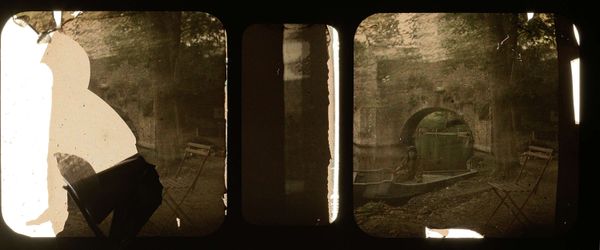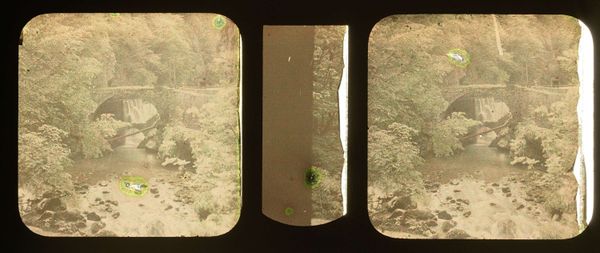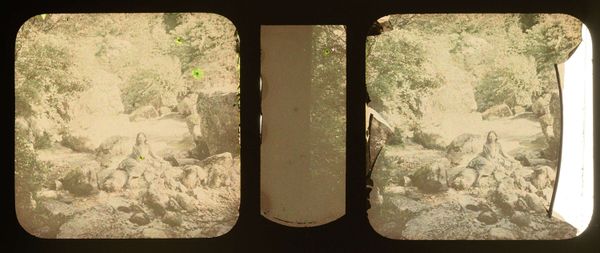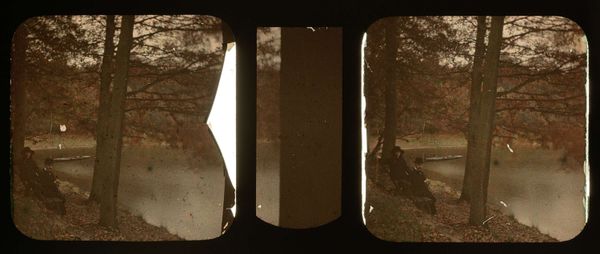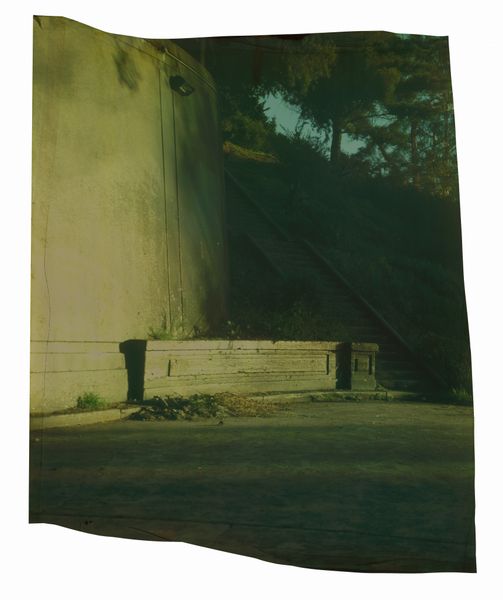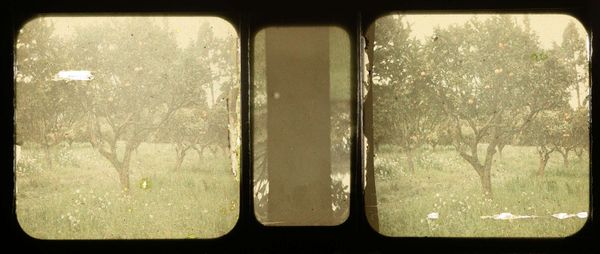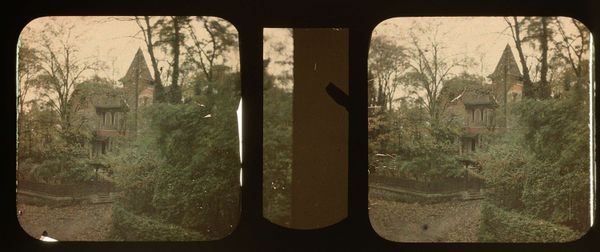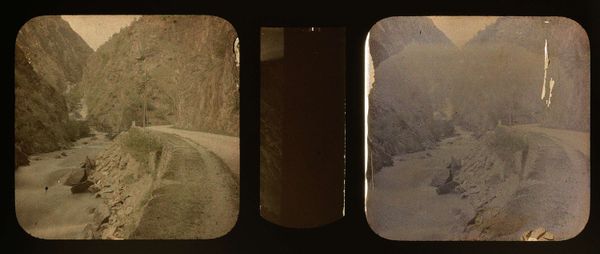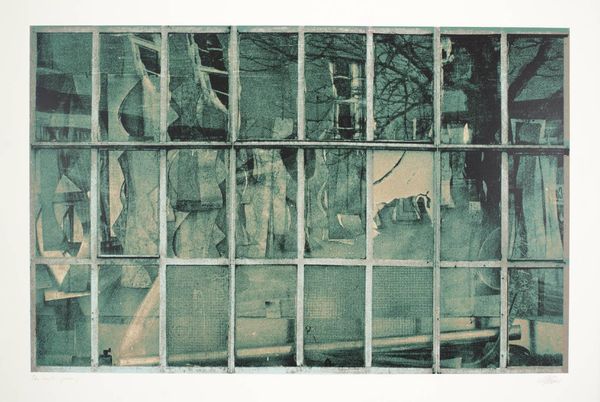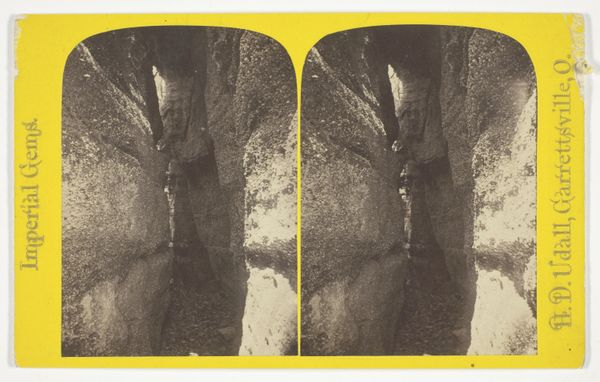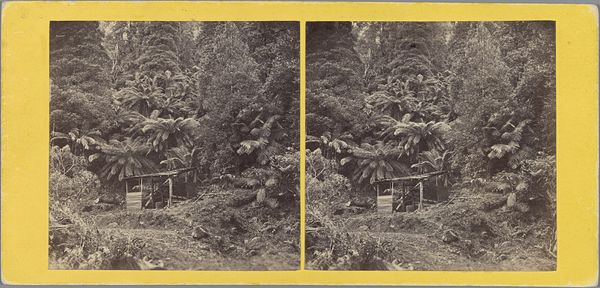
photography
#
pictorialism
#
sculpture
#
landscape
#
photography
#
ceramic
#
realism
Dimensions: height 75 mm, width 150 mm
Copyright: Rijks Museum: Open Domain
Editor: Here we have Adolphe Burdet's photograph, "Woman Standing by Waterfalls," created sometime between 1907 and 1935. It's quite a serene scene, almost dreamlike. There's a figure standing near the cascading water, but her presence is somewhat mysterious. What do you see in this piece beyond the immediately visible? Curator: The placement of the woman, almost swallowed by the landscape, really strikes me. It's tempting to read this photograph through a postcolonial lens. Who is this woman? And what does it mean for her to be placed so deliberately in a composition that emphasizes the power of the natural world? Is she reclaiming it, or is she dominated by it? The muted tones further add to a sense of displacement. Editor: I hadn't considered the postcolonial aspects at all. I was so focused on the pictorialist style, with its soft focus. Curator: Pictorialism itself was a very self-conscious movement, often looking back to idealized visions of the past. How does this idealization serve the historical moment in which Burdet was working? Photography, especially at the turn of the century, became a tool for both documentation and artistic expression, often reinforcing existing power structures. Do you notice any tensions in the presentation? Editor: That's fascinating. So, instead of just seeing a pretty landscape, we should consider how photography might be framing ideas about identity and environment. I guess I had assumed nature photography was, well, just about nature. Curator: Exactly. And by questioning whose perspective is prioritized, we start unpacking a deeper conversation around representation and the cultural narrative surrounding landscape and the people that inhibit them. It challenges the romantic notion of pristine, untouched nature, asking us to confront the power dynamics at play. Editor: That completely shifts my understanding. I'll never look at a landscape photo the same way again! Thanks for expanding my view. Curator: My pleasure, questioning how representation in art normalizes societal narrative is a practice that hones overtime.
Comments
No comments
Be the first to comment and join the conversation on the ultimate creative platform.
